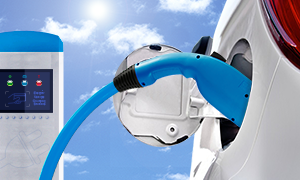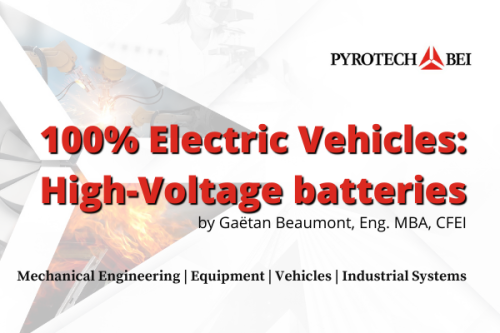LAVAL 1 800 361-0338
Lévis 1 866 835-5335
100% Electric Vehicles: High-Voltage Batteries
Did you know that the first 100% electric vehicles were marketed in 1832? However, it is since 2011 that they are seen more regularly on the roads of Quebec. Moreover, the milestone of 100,000 electric vehicles was surpassed in 2021, and projections indicate that there will be more than 1.5 million electric vehicles by 2030. In addition to this rapid growth of electric vehicles, as of 2035, the sale of new gasoline vehicles will be prohibited in Canada.

However, some concerns and questions arise following the increase of electric vehicles on our roads. As users, what can we do to keep the high-voltage battery in good condition and minimize its loss of autonomy?
Heat is the public enemy number one of all batteries. Indeed, manufacturers of automotive batteries are constantly improving their internal temperature in order to increase the performance and autonomy of vehicles and avoid, in parallel, cases of overheating, or even thermal runaway and fires in extreme cases.
The temperature inside a high-voltage battery compartment naturally increases with ambient temperature but also during recharge and discharge. In fact, current users of electric vehicles find that the charging speed varies continuously when they charge their vehicles using a level 3 charging station (high‑voltage DC). In fact, the internal management system of the battery, in communication with the charger, makes it possible to adjust the intensity of the charging current when the internal temperature of the battery compartment is either too low or too high. Recently, we also noted that some manufacturers even limit the engine power when the internal temperature of the batteries is too low to avoid heating problems.
Therefore, what are the best practices for an electric vehicle user? In general, it is necessary to:
- Avoid charging the vehicle continuously at 100%, unless one is ready to use it over a longer planned distance. In general, a maximum recharge between 80% and 90% is preferred.
- Not let the autonomy drop unnecessarily below 20%. If the battery drops to 0%, or very close to 0%, it is likely that one will no longer be able to recharge it or will succeed only with the dealer’s help or a towing vehicle. Moreover, some manufacturers will not permit the vehicle to be recharged if it has been fully discharged.
- Not charge the vehicle for any reason after each use. A battery must “work” to maintain its efficiency.
- For long‑term storage, charge the vehicle at around 90% and adjust the charge after three months. One should also consult the vehicle manufacturer’s recommendations.
- During extreme temperatures (-35°C or lower), connect the vehicle to the charger (level 1 or level 2) so that the internal temperature management system can warm the high‑voltage battery before the vehicle use.
- Not use level 3 chargers on a regular basis as they increase the internal temperature level much faster than a level 2 (240 VAC) or a level 1 (120 VAC) charger. By the same token, its frequent and regular use could accelerate the loss of autonomy or aging of the batteries.
Worried about battery life? Note that they are usually guaranteed for a period of eight years at 160 000 km[1]. Moreover, a percentage of annual degradation is natural and normal for battery cells. However, the manufacturer's warranties will apply only if the loss of autonomy is greater than the percentage established by the manufacturer (usually around 30%)[2].
Finally, are you concerned about the fire risks of your electric vehicle? Among the various cases of fires, some have been spectacular. However, gasoline vehicle fires ─ often less spectacular ─ have always existed and are relatively frequent, butthey are much less publicized. In fact, according to recent American statistics, one is 60 times[3] more likely to have a fire with a gasoline vehicle than a 100% electric one. The fire of electrical origin is therefore not a new reality exclusive to electric vehicles. Electricity is an incredible source of energy but not very permissive if one is not careful. Good practices, coupled with a constant technology evolution surrounding high-voltage batteries, will definitely mitigate the risks of overheating and the premature loss of autonomy.
by Gaëtan Beaumont, Eng. MBA, CFEI
Mechanical Engineering | Equipment| Vehicles | Industrial Systems


